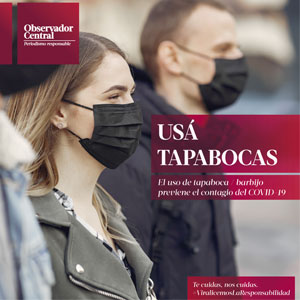
The Act also limited the free silver right of individuals to convert bullion into only one coin, the silver dollar of 412.5 grains; smaller coins of lower standard can only be produced by the United States Mint using its own bullion. The USD is the legal tender currency of the United States, and also serves as a global reserve currency in international trade and financial markets. The USD’s relation to gold and its eventual delinking had a lengthy process. In 1933, when the government stopped the conversion of notes into gold, gold was required to be given to the federal government at a price of $20.67 per troy ounce. The dollar was devalued in terms of its gold content and only allowed to be done so for international transactions.
Pegged currencies
A small but perfect example of this is how the USD is accepted as a means of currency in many emerging market nations when the USD is by no means used as the currency in that nation. https://www.quick-bookkeeping.net/ Many vendors or shops will gladly accept a U.S. dollar instead of their local currency. The USD (United States dollar) is the official currency of the United States of America.

Images of U.S. currency and coins
Dollar Index (USDX), which is comprised of a basket of currencies affiliated with the major trading partners of the United States. These include the euro (57.6% of the Index), the Japanese yen (13.6%), the British pound (11.9%), the Canadian dollar (9.1%), the Swedish krona (4.2%), and the Swiss franc (3.6%). The index goes up when the dollar gains strength https://www.quick-bookkeeping.net/chart-of-accounts-definition-types-and-how-it/ against other currencies and falls when it weakens. The USD accounts for approximately 88% of all foreign exchange transactions according to the Bank for International Settlements’ (BIS) 2019 triennial report. The last coins to be converted to profiles of historic Americans were the dime (1946), the half Dollar (1948), and the Dollar (1971).
How Much USD Is in Circulation?
The U.S. dollar became an important international reserve currency after the First World War, and displaced the pound sterling as the world’s primary reserve currency by the Bretton Woods Agreement towards the end of the Second World War. The dollar is the most widely used currency in international transactions,[3] and a free-floating currency. It is also the official currency in several countries and the de facto currency in many others,[4][5] with Federal Reserve Notes (and, in a few cases, U.S. coins) used in circulation. The Spanish dollar was later displaced by the British pound sterling in the advent of the international gold standard in the last quarter of the 19th century.
The reach of the U.S. dollar has resulted in its own index, the USDX, which is a weighted value index against a basket of six other currencies; the euro, Japanese yen, British pound, Swiss franc, Swedish krona, and the Canadian dollar. Founded in 1993, The Motley Fool is a financial services company dedicated to making the world 5 5 cost-volume-profit analysis in planning managerial accounting smarter, happier, and richer. The Motley Fool reaches millions of people every month through our premium investing solutions, free guidance and market analysis on Fool.com, top-rated podcasts, and non-profit The Motley Fool Foundation. Check live rates, send money securely, set rate alerts, receive notifications and more.

Treasury Notes were again printed to help resolve the reduction in public revenues resulting from the Panic of 1837 and the Panic of 1857, as well as to help finance the Mexican–American War and the Civil War. [T]he money of account of the United States shall be expressed in dollars, or at what income does a minor have to file an income tax return units…and that all accounts in the public offices and all proceedings in the courts of the United States shall be kept and had in conformity to this regulation. Furthermore, the U.S. dollar is the official currency of many U.S. territories, including Puerto Rico, Guam, and the U.S.
Effective monetary policy complements fiscal policy to support economic growth. Within the United States, the amount of dollars in existence is measured by one of the several money-supply (money stock) metrics put out by the Fed. The monetary base, or M0, is the aggregate total amount of dollars in circulation in the form of cash (banknote and coin).
- The Gold Standard Act of 1900 repealed the U.S. dollar’s historic link to silver and defined it solely as 23.22 grains (1.505 g) of fine gold (or $20.67 per troy ounce of 480 grains).
- Commercial banks then decide how much money to keep in deposit with the Federal Reserve and how much to hold as physical currency.
- The USD is the most traded currency in the forex market and can be paired with all other major currencies.
- Unlike some other major currencies, the USD to date has never been devalued to handle the country’s debt or seen bouts of hyperinflation.
Notably, $500 and $1,000 banknotes used to circulate in limited amounts but ceased in 1969. Coins are minted in denominations of $0.01 (cent), $0.05 (nickel), $0.10 (dime), $0.25 (quarter), $0.50 (half dollar), and $1.00. Banknotes and coins are produced by the Treasury Department and shipped directly to Federal Reserve banks and branches for distribution and circulation. For a more exhaustive discussion of countries using the U.S. dollar as official or customary currency, or using currencies which are pegged to the U.S. dollar, see International use of the U.S. dollar#Dollarization and fixed exchange rates and Currency substitution#US dollar. Gold and silver coins have been previously minted for general circulation from the 18th to the 20th centuries. The last 90% silver coins were minted in 1964, and the last 40% silver half dollar was minted in 1970.
At first, the dollar was denominated only in coins, with paper currency introduced in 1861, and its value was keyed to the relative prices of gold, silver, and copper. Because of its strength and stability, many foreign governments and central banks hold onto U.S. dollar reserves to help keep their own economy and local currency stable. This may be in the form of actual USD currency holdings, or (more commonly) as U.S. Monetary policy directly affects interest rates; it indirectly affects stock prices, wealth, and currency exchange rates. Through these channels, monetary policy influences spending, investment, production, employment, and inflation in the United States.









